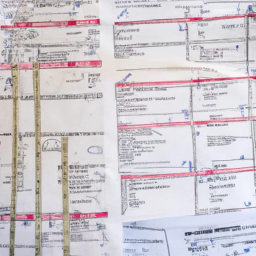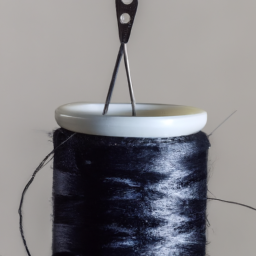
Creating beautiful and unique garments through sewing patterns by hand is a timeless craft that has been cherished by many for generations. While sewing machines offer convenience and speed, there is something incredibly satisfying about meticulously sewing a pattern by hand.

Hand-sewn patterns require patience, precision, and creativity. It allows for greater control over the stitches and offers a personal touch that cannot be replicated by a machine.
Benefits of Sewing Patterns by Hand:
- Enhanced creativity: Hand-sewing patterns allows for more creativity as you have complete control over the stitch length, width, and tension. This flexibility enables you to experiment with different techniques and decorative stitches, resulting in unique and beautiful garments.
- Meditative and relaxing: Hand-sewing patterns can be a therapeutic activity, providing a calm and meditative experience. The rhythmic motion of the needle in and out of the fabric can help reduce stress, promote mindfulness, and improve overall well-being.
- Portability: Unlike sewing with a machine, hand-sewing patterns can be done anywhere, making it an ideal craft to take on the go. Whether you’re traveling, attending workshops, or simply enjoy sewing in different locations, a sewing project by hand can easily fit into your bag.
- Historical significance: Sewing patterns by hand connect us to our ancestors, allowing us to appreciate the craftsmanship and dedication that went into creating garments before the advent of sewing machines. By practicing this traditional craft, we honor and keep alive an important part of our cultural heritage.
Getting Started with Hand-Sewing Patterns:
To start sewing patterns by hand, you will need a few essential tools:
- Needles: Choose needles appropriate for the fabric and thread you are using. Sharper needles work best for delicate fabrics, while thicker needles are suitable for heavier materials.
- Thread: Select a thread color that complements your fabric. Consider using high-quality threads that are strong and durable.
- Thimble: A thimble protects your finger and provides support while pushing the needle through thick layers of fabric.
- Scissors: Sharp, small scissors are essential for cutting thread and trimming excess fabric.
- Pins: Use pins to hold your pattern pieces together before sewing. Make sure to choose pins that are appropriate for the weight of your fabric.
Once you have gathered your tools, gather your fabric and pattern. Carefully cut out the pattern pieces and pin them on your fabric. Use a tracing wheel or chalk to transfer the pattern markings onto the fabric.
Thread your needle and tie a knot at the end. Align the pattern pieces, and begin stitching along the marked lines. Take your time, ensuring that each stitch is even and secure.
When you have completed a section or seam, press it with an iron to create crisp and neat lines. This step helps to set your stitches and adds a professional touch to your hand-sewn garment.
Continue sewing your pattern until all pieces are joined together. Finally, remove any visible basting or pins, and give your creation a final press with the iron. Admire your handiwork!
Remember, hand-sewing patterns may take longer than using a machine, but the results are worth it. The satisfaction of creating a garment by hand and the joy of wearing something truly unique are unmatched!
